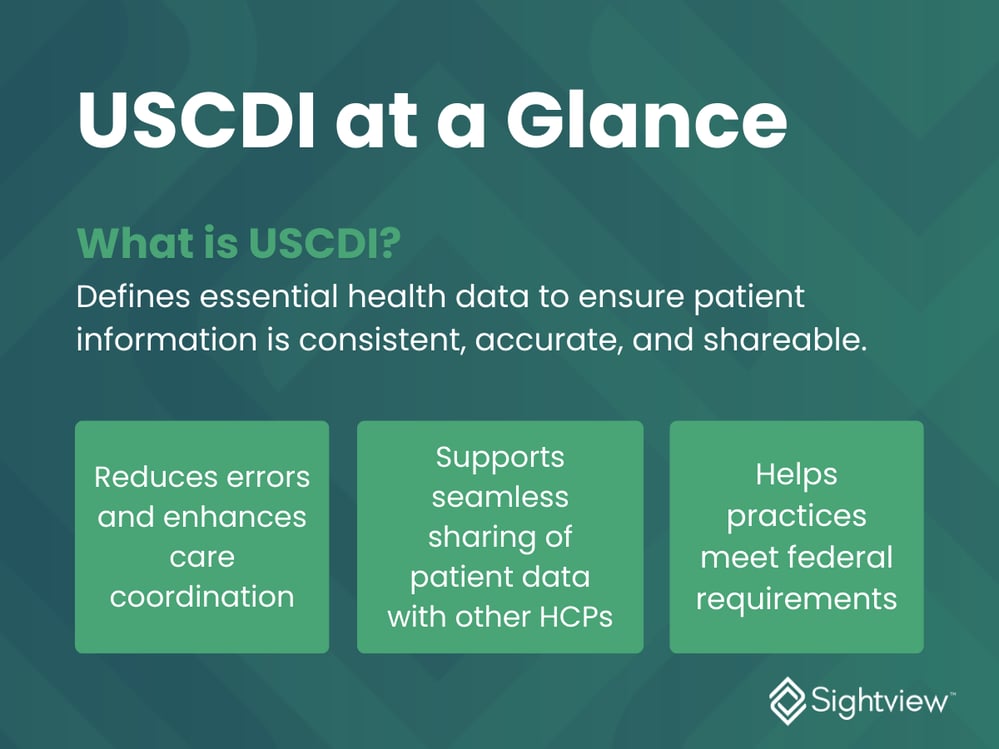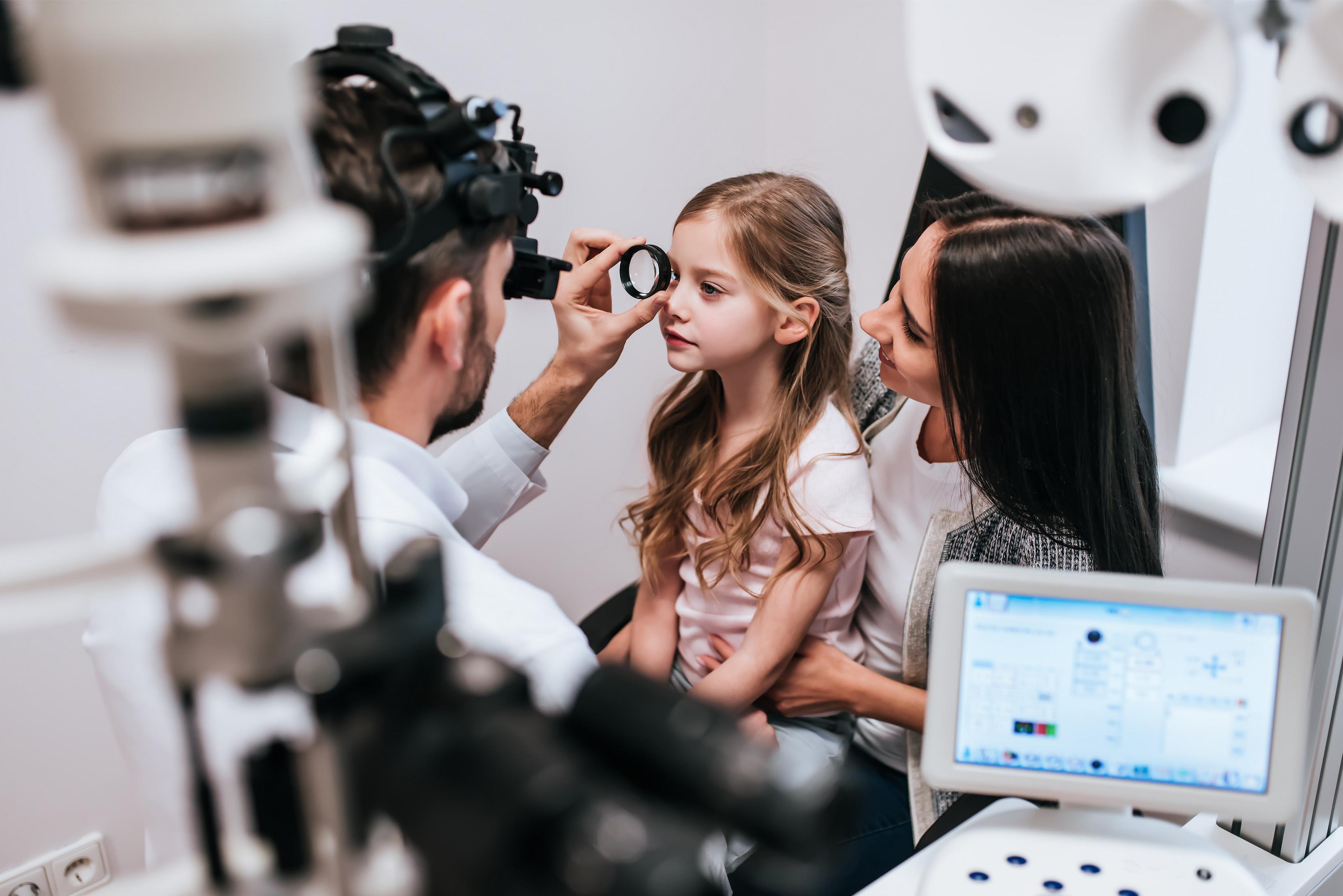Are You Ready for 2026? A Compliance Checkup for Eye Care Practices
Compliance is a challenge for every healthcare practice, including eye care. From navigating the ever-changing Merit-based Incentive Payment System...
4 min read
Sightview
:
Oct 23, 2025 11:18:08 AM
Expectations for interoperability of health information are higher than ever, and eye care is no exception. Regulators, patients, and payers are all raising the bar for how well providers exchange patient data. Once considered a “nice to have,” interoperability is now crucial for delivering quality care and staying compliant.
Optometry and ophthalmology practices, which were once relatively unaffected by bigger health IT mandates, are now required to meet the same interoperability standards as large healthcare systems and hospitals. These standards affect practices' workflows, from patient intake to referral handoffs to reporting for CMS programs.
In this blog, we’ll explore what interoperability means, why it matters for eye care providers, and how the latest regulatory updates are changing the way practices manage compliance, workflows, and patient care.
Interoperability is defined as the capacity for each system on a network to communicate with other systems to share, consolidate, and use data. This capacity reaches beyond a practice’s internal network to other external networks. Interoperability ensures different systems can “speak the same language” across providers and care settings. Strong interoperability for eye care practices means:

The United States Core Data for Interoperability (USCDI) provides a standardized set of health data elements that all providers must exchange. For eye care providers, it ensures necessary patient information can be shared accurately and efficiently, which improves care coordination and prevents errors.
USCDI compliance isn’t just another regulatory checkbox. It’s a framework that helps providers, including optometry and ophthalmology practices, stay compliant, coordinate care effectively, and keep patients happy.
USCDI requirements are constantly expanding and adapting to meet evolving needs. Each version introduces new classes and elements that support interoperability and better patient care. Starting on January 1, 2026, USCDI v3 will be required. This new version includes:
FHIR, is the next generation framework for fast, efficient data exchange of electronic health information. It standardizes how data is structured and shared so that EHRs, third-party apps, patient portals, and other tech tools can communicate seamlessly regardless of how that data is stored locally in the health IT module.

For example, imagine a patient visits an optometrist initially, but needs to be referred to an ophthalmologist for a specialty procedure. With FHIR, the patient’s exam results, prescription details, and history can be shared with the ophthalmologist’s practice in a manner that protects the integrity and content of the patient’s information, regardless of what EHR systems they use. With FHIR, staff no longer need to make faxes, phone calls, or worry about lost information. This not only saves time but ensures patients get quick, coordinated care.
CMS is also a major driver of interoperability in eye care. Programs like the Merit-Based Incentive Payment System (MIPS) include the Promoting Interoperability category which uses performance measures focused on data exchange to tie reimbursement, reporting, and penalties to a practice’s ability to exchange patient data effectively.
The term “information blocking” refers to the interference of access, use or exchange of electronic health information. The information blocking rule often requires that a provider respond to a request for patient health information within a specific time and avoid practices or processes that introduce unnecessary delays. The use of an EHR and patient portals that are ready to share patient information is one of the best ways to avoid information blocking allegations which can lead to expensive penalties and fines.

Using an EHR certified by the Assistant Secretary for Technology Policy/Office of the National Coordinator for Health Information Technology (ASTP/ONC) ensures your practice captures and transmits data in compliance with current regulatory standards, reduces the risk of information blocking, and supports your practice’s successful participation in programs such as MIPS.
Sightview’s EHRs for optometry and ophthalmology are updated with the latest USCDI and data exchange standards as mandated by the ASTP/ONC-certification program. Our experts handle compliance behind the scenes, giving your practice peace of mind and efficiency.
Staying ahead of interoperability and other compliance requirements like MIPS can feel like a full-time job. That’s where integrated compliance within a certified EHR reduces stress and risk.
When evaluating an EHR for integrated compliance, look for:

Sightview is designed specifically for eye care and full compliance. Our EHR and Practice Management platform includes integrated compliance tools and ongoing updates, so your staff can focus on patient care. Our dedicated compliance team monitors the latest regulations and delivers timely updates to your system.
For practices new to Sightview, switching brings a built-in compliance infrastructure aligned with interoperability standards. For existing Sightview users, compliance is a living feature. With our ONC-certified platform, you get continuous updates that support the latest mandates, so you can be confident in the event of an audit.
As 2025 wraps up, we’re rolling out several compliance enhancements to our platforms, including:
Enhancing interoperability isn't just about meeting regulatory requirements. It's an opportunity to streamline workflows, enhance patient care, and simplify data exchange across care settings. With an ONC-certified EHR and compliance team supporting your practice, you can confidently navigate audits knowing you’re always up to date.
Sightview's platform is built for compliance, designed for eye care, and always ready for what’s next. Contact Sightview today to learn more about our suite of solutions for ophthalmology, optometry, and optical practices.

Compliance is a challenge for every healthcare practice, including eye care. From navigating the ever-changing Merit-based Incentive Payment System...

Ensuring that every patient who leaves your office feels as though they’ve received the best care possible goes well beyond medical expertise....

Patients have more choices than ever when it comes to eye care. As a result, it has never been more important for optometry practices to have a...